In her capacity as one of Earthshot Prize founding and council members, Cate Blanchett with Prince William visited the laboratories where Colorifix creates its textile dyes. Colorifix is a biotechnology firm that was a finalist at 2023 Earthshot Prize.
The site’s hosting renewal is two months away and we would appreciate if you can help us reach our goal by donating to the site so we can keep it open. You can follow this link to see our most recent mass update and on how you can donate.
Colorifix Visit at Norwich
Cate Blanchett Flies The Flag For Sustainability (Once Again)
Cate Blanchett is known for championing sustainable fashion on the red carpet, from repeat wearing dresses to upcycling past Oscars looks. Now, the actor has taken her commitment one step further by visiting eco-friendly dye start-up, Colorifix, alongside Prince William, in Norwich today.
“I think it’s imperative that we reimagine fashion: not only how it’s made, but how we value it, and how we consume it,” Blanchett – who is a council member for the Earthshot Prize, the Prince of Wales’s environmental initiative to find and scale innovative solutions to the world’s biggest environmental challenges – tells Vogue. “I think creativity can flourish within sustainable limits.”
Case in point? The work that Colorifix is doing to create a more eco-conscious alternative to traditional dyeing – a hugely polluting industry that uses vast amounts of energy and water. Founded by two Cambridge scientists, the start-up – which was a 2023 Earthshot Prize finalist – identifies the DNA sequences of pigments found in nature, before recreating these in the lab using microorganisms. “Dyeing and wet processes in general are some of the most impactful activities that fashion does towards the environment,” co-founder and CEO Dr Orr Yarkoni explains, noting that Colorifix’s biological process can save 77 per cent on water consumption, 31 per cent on carbon emissions and 19 per cent on energy usage, compared to conventional methods. “We can make a really big difference, and we’re just at the start of what we’re doing.”
Blanchett was certainly impressed by what she saw. “I was a huge supporter of Colorifix when I came across them in the Earthshot Prize, but to come here today and see how it’s already grown, and the advances that are literally happening on a day-by-day basis, was really inspiring,” the actor says.
Expect to see Blanchett wearing a Colorifix-dyed dress on the red carpet before too long, then. In the meantime, the actor will continue to recycle past looks from her own wardrobe. “It’s just a no-brainer, really,” she replies, when asked why she’s so committed to repeat wearing. “It takes so little effort to do it; we all do it in our everyday lives. I’m always looking back – I’ve still got my denim jacket I was given when I was 15.” Another way to keep your wardrobe fresh? Clothes swapping. “I have a friend, we made this commitment about 15, 20 years ago, that if she came to my house and said, ‘I really like what you’re wearing’, I have to give it to her – [and] it goes the other way,” she explains of an arrangement that sounds (almost!) too good to be true.
Ultimately for Blanchett, though, it’s about reducing the enormous amount of waste that exists within the fashion industry. “Waste is an anathema to creativity; we can’t keep consuming the way we’re consuming,” she says. “When you come to Colorifix, you see it’s deeply uncool and unfashionable to do.”
Cate Blanchett has said that she will reconsider the colour of clothes she wears in the future, after touring clothes dye laboratories in Norwich with Prince William.
The Oscar-winning actress joined the prince on a royal visit to the laboratories of Colorifix, a company that makes environmentally friendly clothing dye and was a finalist in the Earthshot Prize.
Colorifix aims to replace the fashion industry’s use of these chemically synthesised dyes by using DNA sequencing and natural colours to create sustainable dye.
Blanchett said the visit had “certainly been an education in colour and what is possible” and added that she will “look at the amount of white and black and blue in my wardrobe and maybe try and gravitate towards pinks and peaches”.
The visit marked Blanchett’s ongoing support for William’s Earthshot Prize. Speaking afterwards, the actress, who has won two Academy Awards, said: “The DNA sequencing is incredible. And I think what happens in any scientific process — though I’m far from an expert — is that you get these incredible happy accidents. Like the discovery of a metallic sheen to one of the pigments.”
The Prince of Wales and Cate Blanchett donned lab coats as they witnessed the hi-tech work of an environmentally-friendly clothes dye company.
William and the actress visited labs in Norwich on Thursday where Colorifix, a biotechnology firm, creates its textile dyes.
Colorifix, which was a finalist in William’s Earthshot Prize in 2023, has developed a biological process that replaces the use of harmful chemicals in textile dyes.
Since it was founded in 2016, the brand has partnered with fashion brands including H&M and Pangaia.
As William and Blanchett were taken through each step of the process to make the eco-friendly dyes, the Prince of Wales asked Sophie Vaud, the head of microbial engineering, to provide a “layman’s version” of the science.
After identifying a colour created naturally by an animal or plant, Colorifix’s scientists sequence the DNA of that organism to find out where the colour is coded in its genetics.
That DNA code is then translated into a safe microbe which is then fermented to grow, creating a dye that can be used on natural and synthetic fabrics.
Dyes made chemically have a negative impact on the environment as they seep into rivers, harming wildlife. The process also uses a large amount of water.
The Prince of Wales and Blanchett, a council member of the Earthshot Prize, were invited to observe DNA gel under a microscope and were shown diagrams analysing the effectiveness of the pigments.
“What if it explodes?” Blanchett, joked before looking at the sample.
“I’m not going to pretend I know what that drawing means,” William told the experts when being shown diagrams.
The pair were then taken through the fermentation process which is where the dye is produced in a small version which can be scaled up.
David Clarke, head of fermentation at Colorifix, which is based in Norwich Research Park on the edge of the city, said their fermentation to produce the dyes is “just like brewing”.
“We use a genetically-engineered bacteria to produce the substance – in this case colourants. In the brewing industry it’s ethanol.
“Traditional dyeing is very, very polluting. This is completely innocuous.”
William and Blanchett were wowed by the range of colours produced when shown samples in the colouration lab, especially a bright teal.
In that lab, the dyes are sampled on a range of fabrics and then washed and tumble dried to test how they work and if there is any run off.
Rebecca Hiscock, a colouration technician, showed them some of the samples.
The Prince of Wales is founder and president of the global environmental award and Blanchett helps pick the winners.
“It’s going really well, and it’s really exciting,” he said, while Blanchett told them their work was “really inspiring”.


Screencaps 2

Colorifix Visit


Visiting 2023 @EarthshotPrize Finalist @colorifix for a demonstration of how the natural world is powering a sustainable dye revolution. Joined by Prize Council Member Cate Blanchett to see how this innovation can 'Build a Waste-free World', one thread at a time. ? pic.twitter.com/8n5QnuXZ2h
— The Prince and Princess of Wales (@KensingtonRoyal) June 19, 2025
Prince William with Cate Blanchett, who is on the Earthshot Prize Council, at Colorifix labs ? pic.twitter.com/mHEuVikTj0
— India McTaggart (@indiamctaggart) June 19, 2025
Cate Blanchett signs a fans photo as she leaves the Innovation Centre at Norwich Research Park today.@NorwichResearch @UEA_journalism #PrincessOfWales #CateBlanchett #EarthshotPrize pic.twitter.com/TfBlkelcbw
— Steven Whitear (@stevenjourno) June 19, 2025
Toxic chemicals are eliminated and water waste is reduced by @colorifix using DNA to copy natural colours from plants, animals, or microbes – thus creating dyes without using harmful chemicals. This innovation offers real hope for a cleaner, sustainable future in fashion. ?? pic.twitter.com/q40rKmcDND
— The Prince and Princess of Wales (@KensingtonRoyal) June 19, 2025
Sources: Vogue, The Times, Independent, EDP24
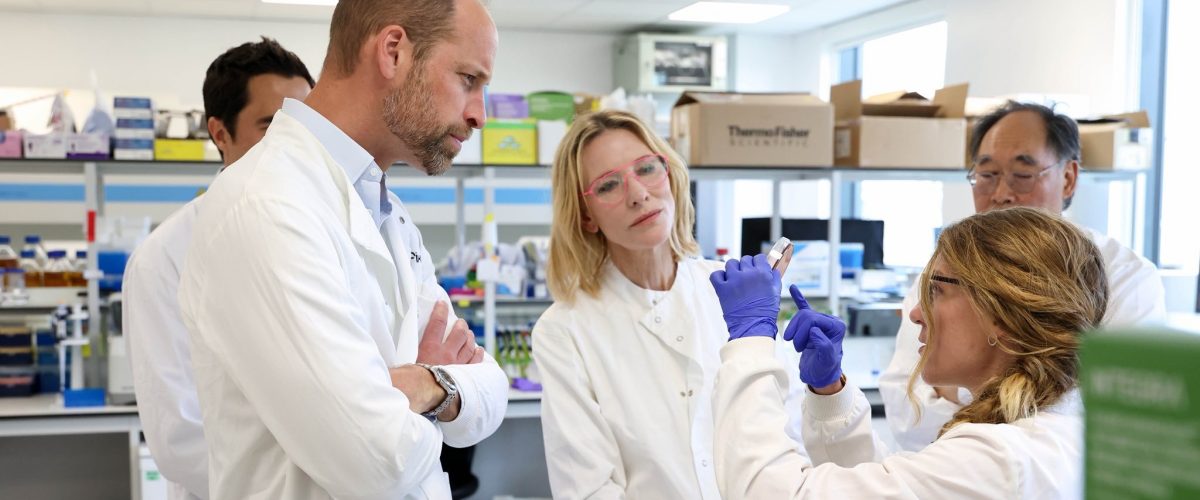
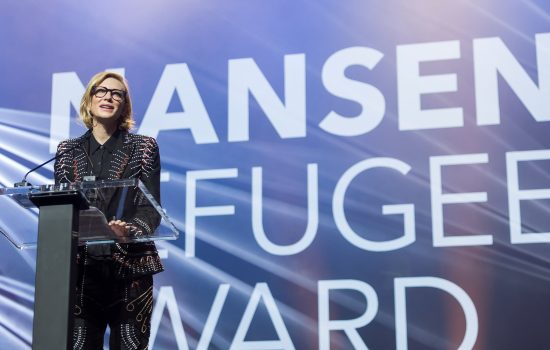
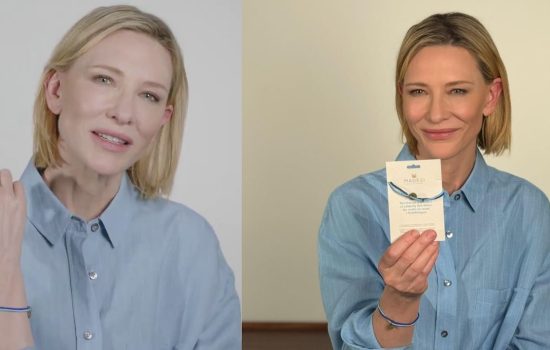
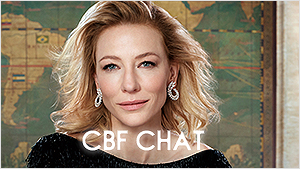
 A Manual for Cleaning Women (202?)
A Manual for Cleaning Women (202?)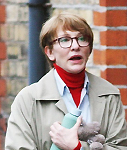 Father Mother Brother Sister (2025)
Father Mother Brother Sister (2025)  Black Bag (2025)
Black Bag (2025)  The Seagull (2025)
The Seagull (2025)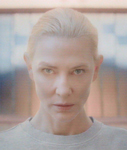 Bozo Over Roses (2025)
Bozo Over Roses (2025)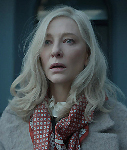 Disclaimer (2024)
Disclaimer (2024) 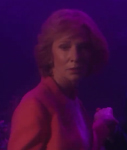 Rumours (2024)
Rumours (2024)  Borderlands (2024)
Borderlands (2024)  The New Boy (2023)
The New Boy (2023) 











